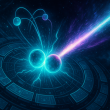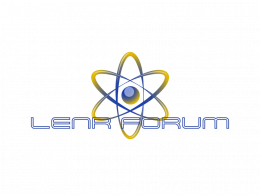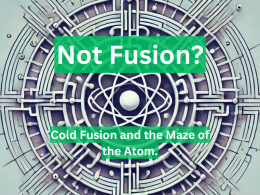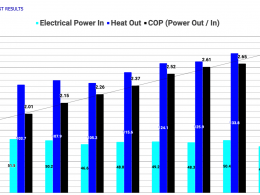The eLBRUS-Lab at Szczecin [visit] is in part funded by the European Union’s CleanHME Horizon 2020 program [Website: http://www.cleanhme.eu/#home ] and has generated new science for its home university, but also reached across borders to bring collaborations benefiting labs across Europe. Some of the talks at ICCF25 are directly related to the eLBRUS-Lab and European Union funding.
In the Poster Sessions, a group made of researchers from the Institute of Physics University of Szczecin and Institute of Mathematics, Physics and Chemistry at Maritime University of Szczecin, present University of Szczecin accelerator system for low energy fusion reactions. The group includes M. Kaczmarski, K. Czerski, R. Dubey, G.D. Haridas, A. Kowalska, N. Targosz-Ślęczka, and M. Valat. The Abstract describes some of what the lab offers:
The “eLBRUS” laboratories at the University of Szczecin are equipped with a unique accelerator system operating under ultra-high vacuum (UHV) conditions [1]. An electron cyclotron resonance (ECR) ion source delivers light ion beams with currents up to 1 mA and a long term energy stability of about 10 eV. In the recent years, a special deceleration lens system has been installed to additionally increase beam current at the target for energies below 1keV.
Those two institutions also collaborated for two talks on Tuesday. In the morning, Rakesh Dubey will present in-person live Electron observation benchmarking for solid-state DD fusion experiments at thermal energies. On Tuesday afternoon, Monte Carlo Geant 4 simulation for studying the DD reactions at thermal energies will be presented by Gokul Das Haridas of University of Szczecin Institute of Physics.
Joining the Maritime University of Szczecin and University of Szczecin are the Polish Academy of Science, Kraków, and West Pomeranian University of Technology to collaborate on the Poster Local crystal structure of deuteron implanted Zr samples relevant to LENR. From the Abstract:
Modification of the local crystal structure has strong influence on both hydrogen diffusion and the effective electron mass. The latter determines the strength of the local electron screening effect [1] and can change the deuteron-deuteron reaction rates at thermal energies by many orders of magnitude [2]. 2H(d,p)3H reactions are studied using the unique accelerator system with ultra-high vacuum, installed in the eLBRUS laboratory at the University of Szczecin [3].
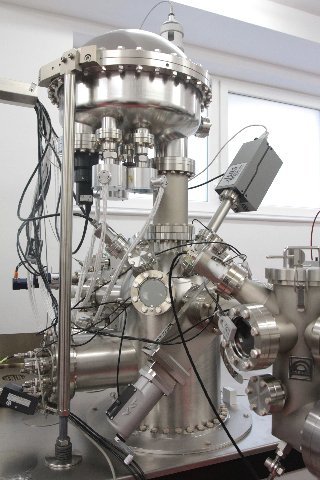
The Jozef Stefan Institute, Ljubljana, Slovenia adds M. Lipoglavsek, A. Cvetinovic, D. Deordic to the Szczecin collaborative group with the live in-person presentation of Nuclear reaction enhancements determined by means of direct and inverse kinematics in metallic environments presented by N. Targosz-Ślęczka on Wednesday morning.
More international collaboration between University of Szezecin and SART-von-Rohr in France with the Poster on New Gas-Loading System in eLBRUS-Labs: Studying Nuclear Reactions at Thermal Energies. Members in this group include Mathieu Valat, Rakesh Dubey, Mateusz Kaczmarski, Konrad Czerski, Natalia Targosz-Ślęczka, Agata Kowalska, and Gokul Haridas. From the Abstract:
Construction of a new and unique gas-loading system is necessary for expanding our research capabilities toward thermal energies. The current upgraded accelerator system that is build at eLBRUS-labs, University of Szczecin provides crucial results of the d+d reactions for projectiles energies down to 1keV [1,2]. For energy production applications and for establishing a comprehensive theory on these fusion reactions, we need a new apparatus that will allow measurements of nuclear reaction rates at thermal energies, and also comparison with results produced before by many experimental research in the field of CMNS.
A Poster on the collaboration between the University of Szczecin and FutureOn S.r.l., Rome, Italy reports on Detection of high-density states of hydrogen isotopes via ion beam acceleration against catalytic targets in a Poster. The group U. Abundo, G. De Vita, R. Dubey, F. Galli, D. Imperatori, M. Zecchiaroli, also includes Guido Parchi, who spoke with LENR-forum Cold Talk about his work generating tritium here.
Including one more talk on Monday afternoon, when Francesco Celani presents live in-person The role of electric pulse shape on the generation of AHE in surfacemodified Constantan, at high temperatures and under Hydrogen or Deuterium gases which brings teams from the University of Palermo together with Istituto Nazionale di Fisica Nucleare in Frascati, Italy, all these projects have CleanHME funding in common.
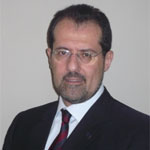
ICCF25 will close Thursday afternoon with a talk by Maurizio Maggiore, Directorate General for Research and Innovation, European Commission, Brussels, Belgium titled EU support of cold fusion research and other international projects.
Currently working in the Surface Transport Unit, he is responsible for automotive and maritime projects dealing with electric drives and fuel cells. He is also responsible for the technical content of the Green Car Initiative and for many related projects.
After his talk, a tour is scheduled of the University of Szczecin eLBRUS-Lab that the European Union’s Horizon 2020 has helped to fund. Mathieu Valat talked a bit about the Lab and some of the instrumentation available in the LENR-Forum Cold Talk here.
The Horizon 2020 project has been succeeded by the Horizon Europe program described here. The benefits of European Union funding have touched the projects highlighted at ICCF25, but the many other labs across Europe, too. The eLBRUS-Lab tour with dozens of scientists who’ve put that funding to good use is the best report for Maurizio Maggiore to take back to the EU home office. Funding science equipment can change lives, and change the world, too.


